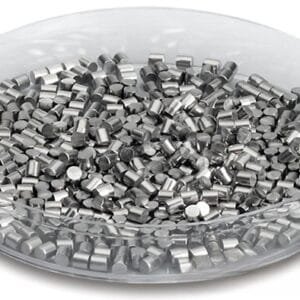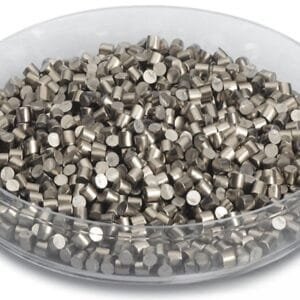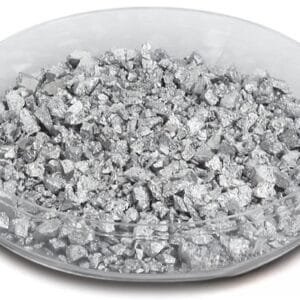| Material Type | GaxAl1-xAs |
| Symbol | GaxAl1-xAs |
| Melting Point (°C) | |
| Theoretical Density (g/cc) |
| Z Ratio | |
| E-Beam | |
| E-Beam Crucible Liner Material | |
| Temp. (°C) for Given Vap. Press. (Torr) | |
| Comments |
GaxAl1-xAs Pellet Evaporation Material
TFM offers high-purity GaxAl1-xAs Pellet Evaporation Material, designed for thin-film deposition in optoelectronics, semiconductor, and photonic applications. Composed of a gallium (Ga) and aluminum (Al) alloy with a tunable arsenic (As) component, this material is used to create gallium aluminum arsenide (GaAlAs) thin films, which are critical for high-efficiency light-emitting devices, lasers, and solar cells. The variable composition, GaxAl1-xAs, allows for precise tuning of optical bandgaps and electronic properties, making it suitable for a wide range of applications in optical communications and photovoltaic systems.
Engineered for thermal evaporation and electron beam (E-beam) evaporation, the GaxAl1-xAs Pellet Evaporation Material ensures high-quality deposition, uniform film thickness, and superior purity, critical for advanced thin-film fabrication.
Key Features and Advantages
- Tunable Bandgap: The GaxAl1-xAs alloy allows for precise control over the optical bandgap, enabling customized performance for light-emitting diodes (LEDs), laser diodes, and solar cells.
- Excellent Optical Properties: Provides efficient light absorption and emission, making it ideal for photonic applications such as optical communication systems and laser devices.
- High Purity & Uniform Deposition: Ensures precise and uniform thin-film deposition, minimizing defects and maximizing device performance.
- Superior Film Adhesion & Stability: Guarantees strong film adhesion to substrates and long-term material stability, which is essential for high-performance devices.
- Customizable Composition: The GaxAl1-xAs alloy allows for the creation of films with varying properties to suit specific research, development, and industrial needs.
Applications
- Light-Emitting Diodes (LEDs): Used in high-efficiency LED technology for displays, lighting systems, and signaling devices.
- Laser Diodes & Optoelectronics: Ideal for lasers, optical switches, and other optoelectronic devices that require precise optical and electrical properties.
- Solar Cells: Plays a key role in the development of high-efficiency photovoltaic cells by optimizing the photoelectric conversion efficiency.
- Semiconductor & Photonic Devices: Supports advanced semiconductor research, photonic devices, and telecommunication systems.
- Optical Coatings & Thin Films: Essential for thin-film optical coatings, providing high optical quality for advanced photonic systems.
Industry Impact and Customization
TFM’s GaxAl1-xAs Pellet Evaporation Material plays a critical role in advancing optical, photonic, and semiconductor technologies. With precise control over material composition, high purity, and superior evaporation characteristics, TFM’s GaxAl1-xAs material enables the creation of high-performance devices that meet the needs of cutting-edge research, development, and industrial applications.
With its tunable optical and electronic properties, high material quality, and consistent performance, TFM’s GaxAl1-xAs Pellet Evaporation Material is a valuable material for optoelectronics, photovoltaics, laser technology, and semiconductor fabrication, ensuring enhanced efficiency, reliable performance, and long-term durability in high-tech applications.


 MSDS File
MSDS File



Reviews
There are no reviews yet.